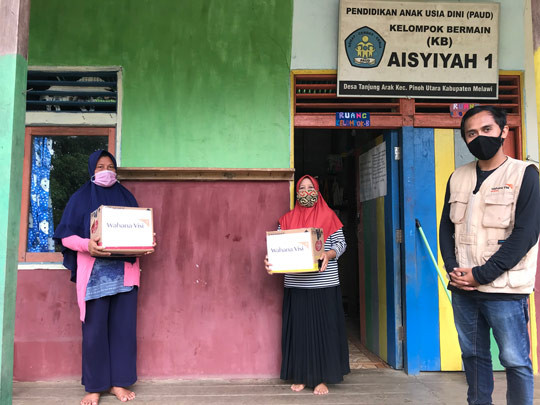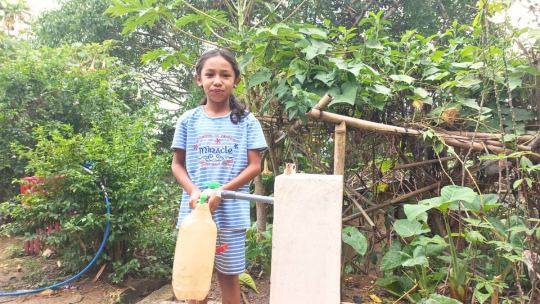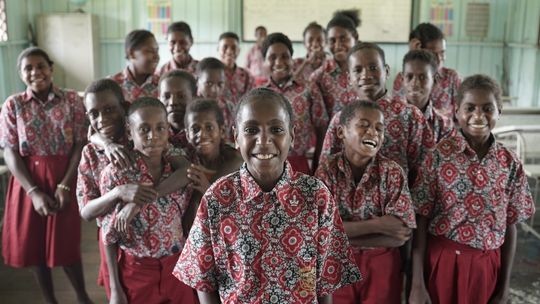Towards a Resilient Agriculture
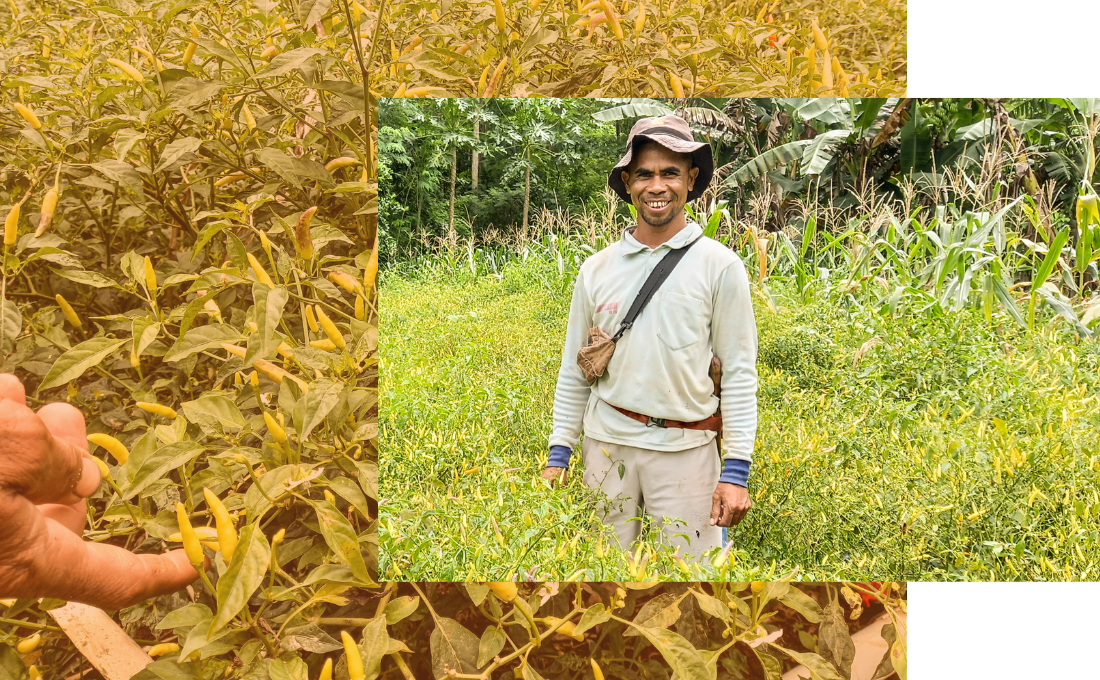
Modern-day agriculture must be resilient, especially in Indonesia. As one of the sectors that contributes to the country's economic growth, Indonesian agriculture is also in the spotlight. Dealing with climate change, competing for markets, and trying to become prosperous farmers are some of the issues of agriculture in villages. Wahana Visi Indonesia, supported by the Australian NGO Cooperation Program (ANCP), has designed a project called INCLUSION to address these issues. Over a period of five years (2022 - 2027), the INCLUSION project implements activities in three provinces, namely East Nusa Tenggara, North Maluku, and Central Sulawesi.
Break Out of Old Habits
Yanti Sandiana (47) has known farming since childhood. Her parents worked as horticultural farmers in a village in Kupang Regency, East Nusa Tenggara. As a child, she used to watch her parents grow vegetables. As a teenager, he started growing his own vegetables. The mustard greens, spinach and kale she grows can be an additional source of pocket money, or to buy books. She also saves some for Christmas.
Today, Yanti is a single parent with four children. She has a strong motivation to send her children to the highest level of education. But if she is still struggling with the old habits of farming, then the hope for her children's education could be dashed. Learning from experience, Yanti recognises that horticultural farmers need to change in order to increase their income. Even if possible, with modern agricultural technology, the way horticultural farming works should be easier.
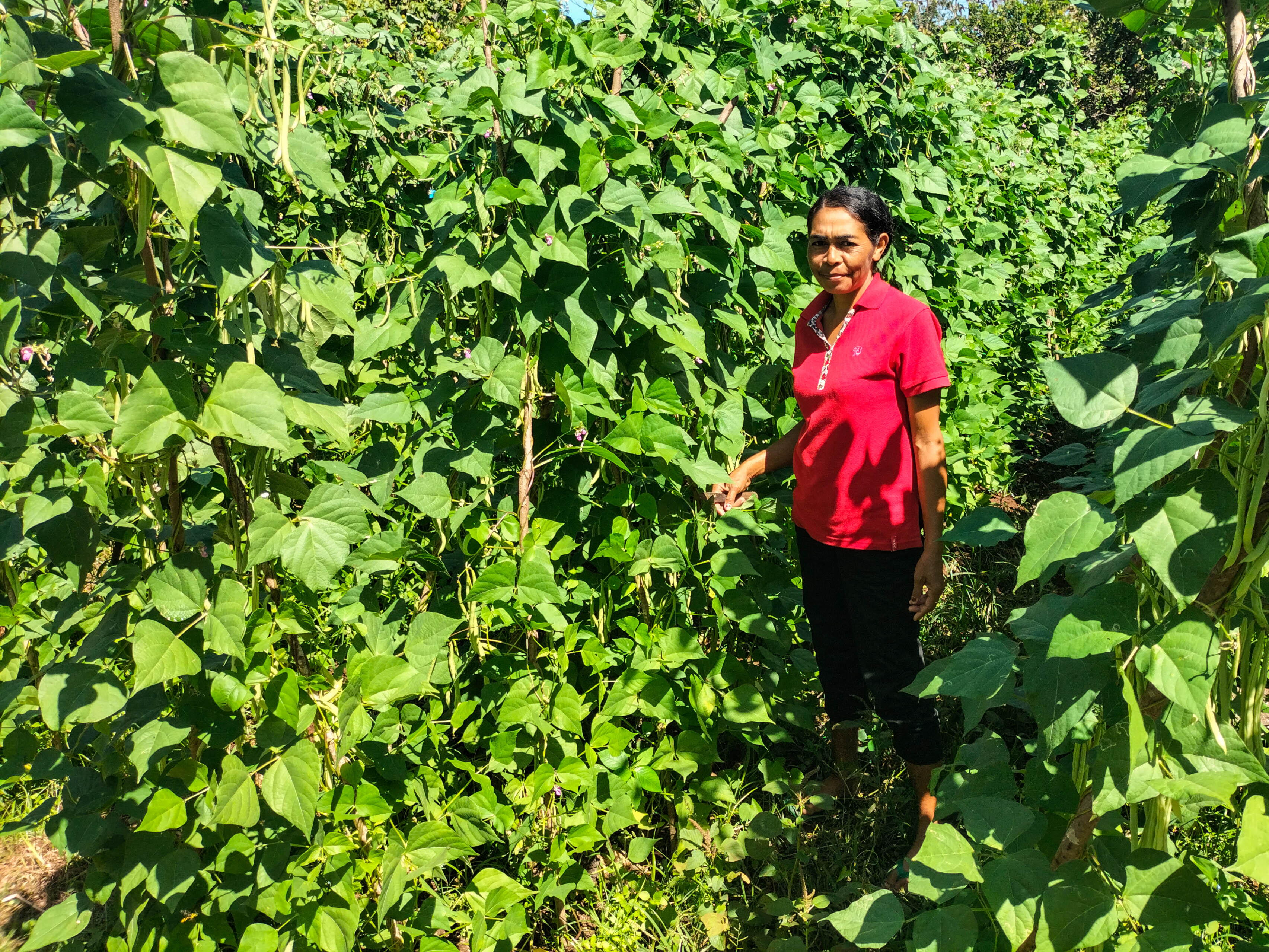
Yanti shows her horticulture plants.
"I have seen several horticulture farmers who have used the drip irrigation package on their land. Since then, I have been dreaming that one day I will use a drip irrigation package like this on my farm," says Yanti. She had already made up her mind that an agricultural technology called drip irrigation could be the answer she needed.
Drip irrigation is a method of treating horticultural crops that fits the geography and context of farmers in East Nusa Tenggara. It saves water and labour, distributes balanced fertiliser to each plant, and promotes automation. Farmers' workload for watering and fertiliser is cut. Farmer productivity has also increased. In their daily lives, farmers who also act as parents have more time to spend with their families.
For Yanti, the increase in work effectiveness and efficiency has opened up new opportunities. "The biggest change is of course the lighter work, especially watering. So I will expand my horticultural land and I am confident that my four children will succeed in their education through horticultural farming. Currently, my first child is studying at the Kupang Technical Academy and I will send the other children to college after they finish high school," he said.
A similar story comes from Nikson Sakau (38), also a horticultural farmer from Kupang Regency. The father of two daughters dreams of being able to provide a safe and comfortable home for his family. If he continues to cultivate his garden in the same way, he believes his dream house will never materialise. He needs innovation in the way he farms.
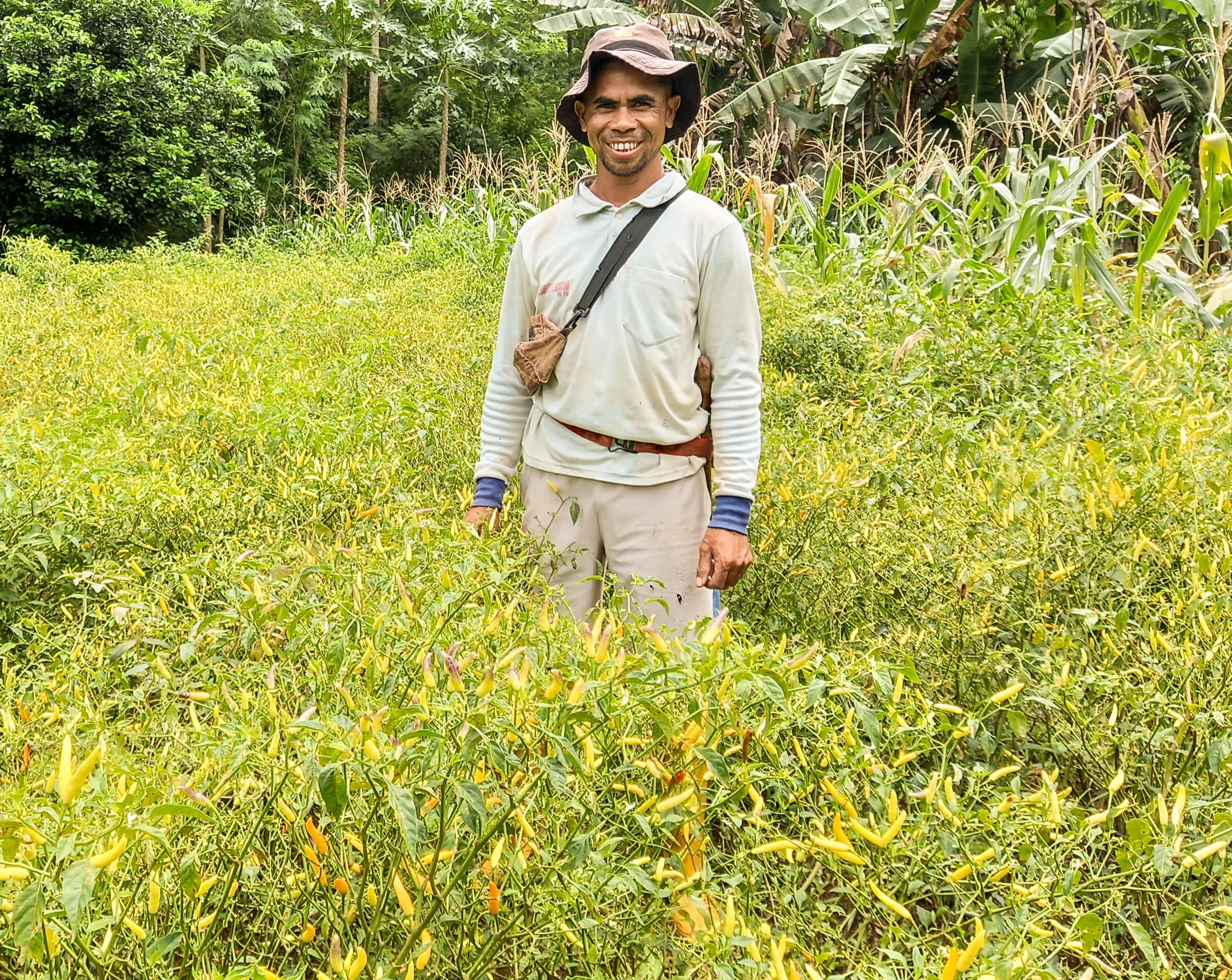
Nikson shows his flourishing chill
Nikson's choice fell on drip irrigation. He saw for himself how this technology could be an opportunity to earn more income. Some farmers in the village provided demonstration plots in two locations as a place to learn and model the application of drip irrigation so that Nikson could be satisfied learning this new technology. He did not hesitate to install the drip irrigation method on his 80-acre farm.
Nikson and his family have experienced many benefits after using drip irrigation. These include savings in the use of water, which will affect the cost of electricity pulses purchased to suck up the water stored in the tub, savings in the use of fertiliser for plants, better plant growth because water is always available, savings in working time, especially watering activities so that more time can be used for other plant maintenance. Nikson and his family also have more time for community and religious activities. From the use of drip irrigation on almost 7,000 chilli trees, Nikson was able to earn more money which he used for the construction of their 9x12 m house.
New Seeds
Apart from drip irrigation, innovation in seed types is also one way to make agriculture more advanced. The right seeds will produce better quality crops. However, the characteristics of the land determine the right seeds. This is what made Yetika Sapiana take the initiative to trial and error, until she finally got the right seeds for quality crops in North Morowali District, Central Sulawesi.
Yetika is a Field Agricultural Extension Worker (PPL). This profession is tasked with understanding exactly what farmers are experiencing, specifically in maize farming. In 2018, she tried planting 5kg of maize seeds obtained from one of the farmer groups. "With these seeds, I obtained a yield of 1-1.2 tonnes of dry corn. This yield is already quite good according to farmers in this village. However, I felt that the yield was not optimal," he said. In other words, 1kg of seeds can produce 200kg of dried maize.
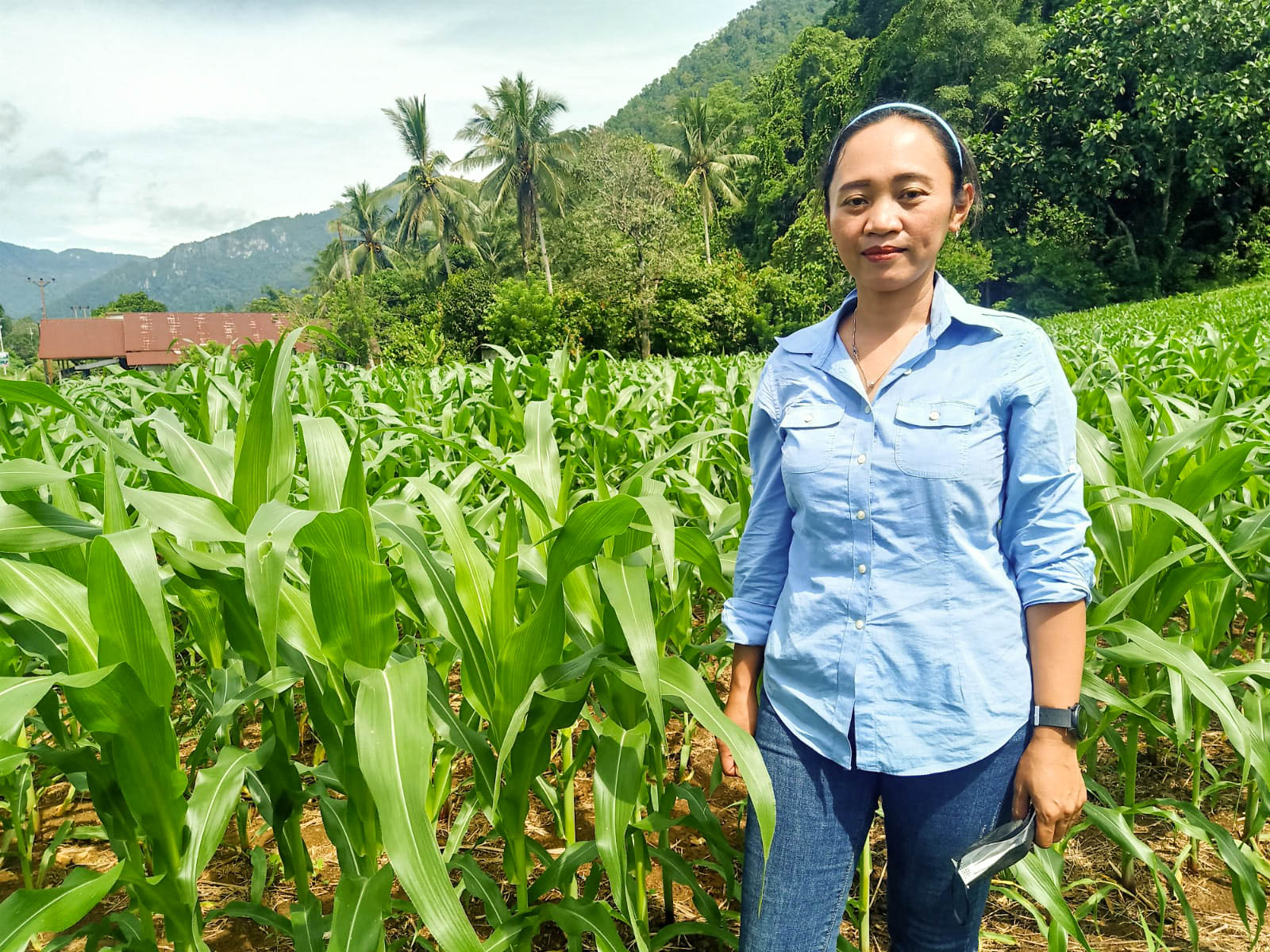
Yetika at her maize field, her spot to experiments.
From her co-worker, Yetika learnt about another maize seedling that could produce 330 kg of dry maize with only 1 kg of seed. This information confirmed her assumption that the seeds from the village farmer group were not the right seeds.
"These results made me very interested to try, so in 2021 I tried planting 5 kg of NK 212 seeds which were recommended by Wahana Visi Indonesia and the harvest was quite good. With more proper care, I am sure the results will be very good," said Yetika. Although NK 212 seeds are more expensive, Yetika does not hesitate to recommend them to farmers. She explained the price of the seeds and the results of monitoring the quality of maize with NK 212 seeds to the village government.
"During the village meeting in 2022, I recommended NK 212 seedlings to be used as seed corn to help the village community by utilising village funds. This was welcomed by the village government because they had also seen the figures of the NK 212 plants that I had planted. I recommended the NK 212 seeds because I wanted the farmers in the village to feel that there is no loss when they plant quality maize seeds even though the price is a bit expensive. With good care, they can get more profit than they did before," he said.
Safrin Utina (70) is also learning to use new seeds. Inyo, as she is affectionately called, is a corn farmer from Tojo Una-Una District, Central Sulawesi. "The first time I planted corn was about 20 years ago. I planted about 20kg of seeds but I only got 2 tonnes. Back then, I still didn't know how to plant corn, so I just made up my own treatment. I am still underdeveloped in terms of treatment. Later, when we see the corn collapse, we will know that there is a caterpillar," he said.
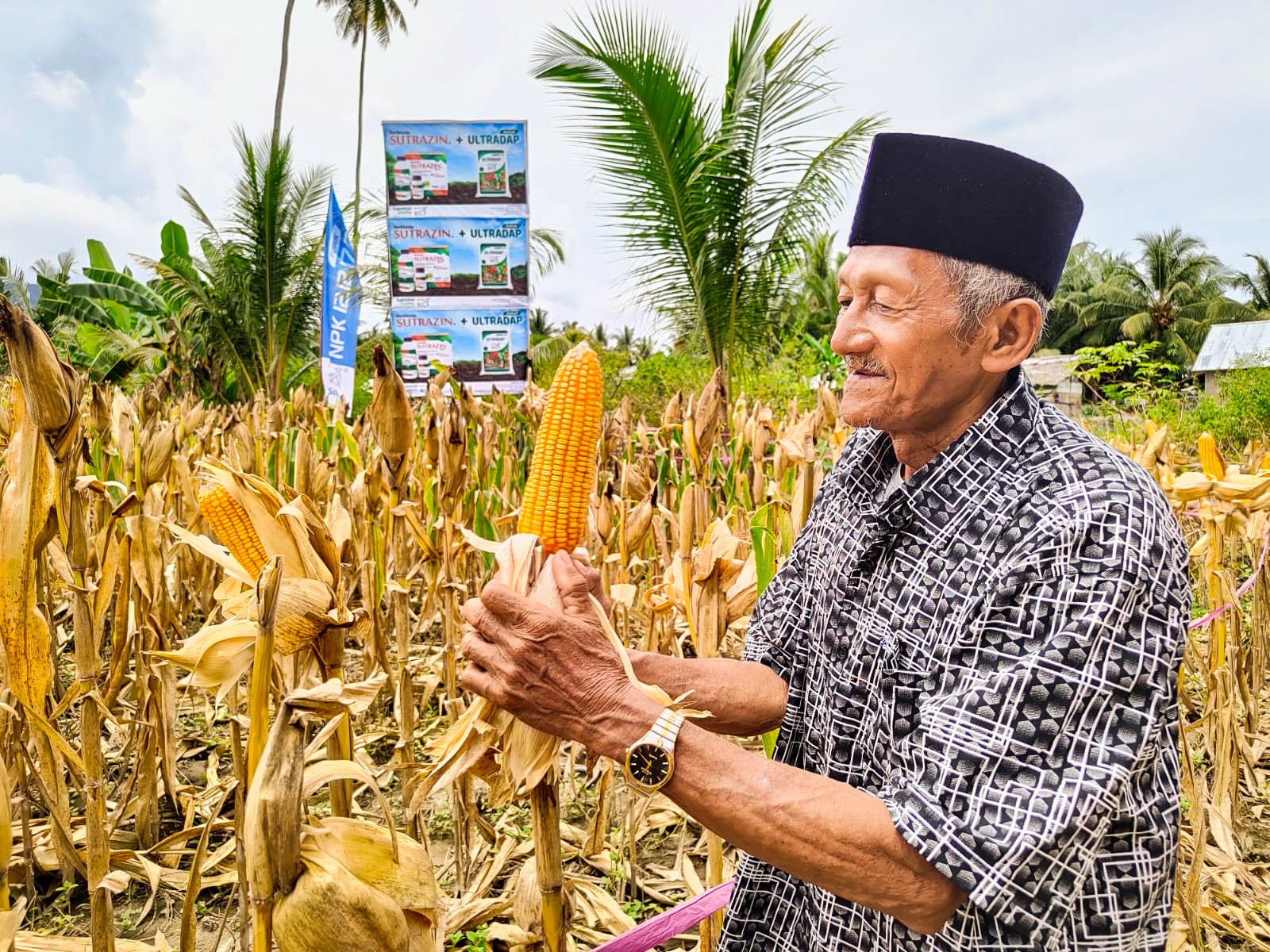
Inyo shows his corn grows better with the right seeds.
Despite her advanced age, Inyo is eager to try the new seeds introduced by PT Saprotan Utama Nusantara. As Wahana Visi Indonesia's partner in implementing the INCLUSION project in Central Sulawesi, PT Saprotan Utama Nusantara provides innovative solutions to improve the quality and quantity of the farmers' maize crops.
In June 2022, PT Saprotan Utama Nusantara set up a demonstration plot in Inyo's yard. The seeds used are the P21 bison variety. In the maintenance process, Inyo always follows the instructions given. Many methods amaze him because they are very different from the way he used to do it. "Now it is very practical because when we spray the grass, we mix it with Ultradap fertiliser. The result is that the grass dies and the corn is fertile. Then we spray MKP fertiliser again, which turns out to be a fruit ballast and it's a new way to care for corn plants," said Inyo.
During a joint harvest event attended by the Head of the Tojo Una-Una District Food Security and Horticulture Office, Inyo was able to show that from 1 kg of seed he could produce 1.125 kg of harvested shells or 787.5 kg of dry sales. In addition, before the maize demonstration plots were harvested, many farmers came to Inyo to ask what kind of seeds to use and how to maintain them so that the fruits were large and evenly distributed from the beginning of growth.
After tasting the sweet results of the new seedlings, Inyo is committed to expanding his maize farming area. Inyo is also keen to encourage other farmers to use good seeds and follow proper maize cultivation methods to increase their income. "I have been farming for more than 20 years, and three of my children have become graduates who are now working. To be a successful farmer, you must be able to keep up with developments, then the results will increase and the family will prosper," he said.
Local Commodities at Market Crossroads
Yahuda Litbagai (61) is a living witness to how walnut farming in his village continues to struggle to find the most profitable market. Walnuts are a local commodity that has accompanied the economy of the people of Alor, East Nusa Tenggara for generations. Yahuda recalls, "In the 1970s, I sold walnuts for Rp 10 per stick. The length of the stick could reach 20-30 cm. When selling walnuts, we walked from the village to the market for about 9-10 kilometres, 2 hours. In the past, it was very difficult to get to the market because the road was steep, we had to go up and down the mountain, and to the edge of the beach,".
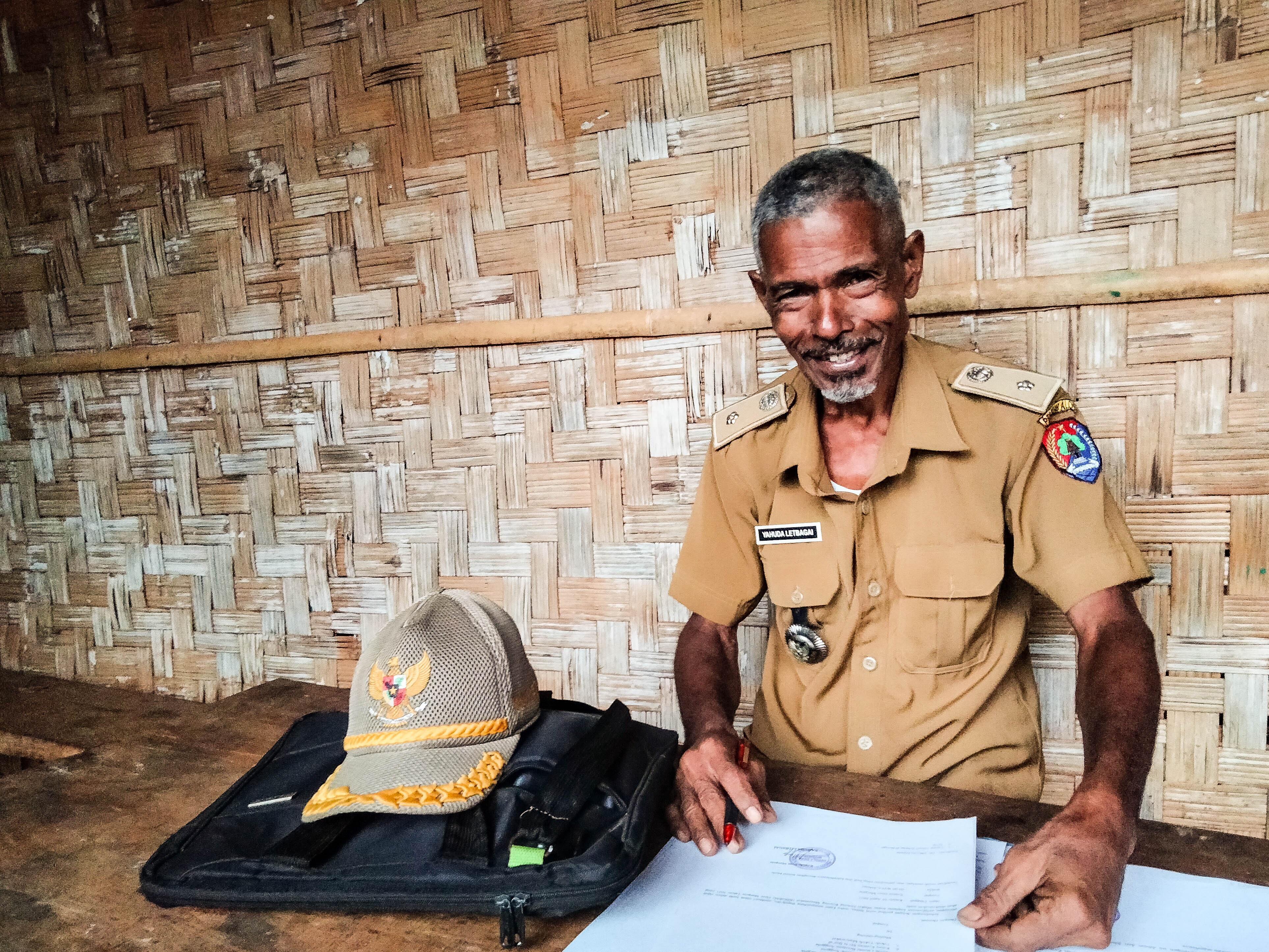
Yahuda also doing his main job as the village chief.
During that period, Yahuda's family had to sell around 30kg of walnuts to meet the family's rice and side dishes needs from week to week. Three decades on, development and access to and from the market has improved. In 2005-2006, a kilo of walnuts was priced at IDR 12-13,000. Two decades later, in 2022, when Yahuda could travel to the market by car and was only an hour away from home, a kilo of walnuts was worth Rp 40,000. "If the price of walnuts is Rp 40,000 per kg and continues to rise, then people will be very eager to find walnuts, unlike in the past," said the man who currently serves as Village Head. Yahuda hopes that walnuts can continue to benefit farmers with a stable selling price. Walnuts had experienced a price drop to IDR 20-25,000/kg in some seasons.
For Yahuda, walnuts have become a local commodity that characterises Alor and should be preserved. Although he has also witnessed how Cyclone Seroja uprooted many old walnut trees and washed them into the sea, Yahuda is not discouraged. "I am one of the people who felt the change from selling walnuts, from initially selling walnuts per skewer of Rp 10, to now reaching Rp 35-40,000 per kg. I once lived from selling walnuts until I became the current Village Head," he said.
He also advised, "We plan to plant walnuts with the village community, maybe in 2024. Because we think walnuts could be endangered if there is no official programme from the government to cultivate walnut trees. We think the Alor Regency government should make a Regional Regulation (PerDa) that strictly prohibits the cutting down of walnut trees. We strive for the community to preserve the walnut tree not only for now but for posterity. If we don't set an example, who will,".
A generation apart, Katerina Letmau (27) is an example of how even young farmers are helping to elevate walnuts as an economically valuable crop. "I like being a walnut farmer because it helps me with my daily needs. I started selling walnuts actively at the age of 21, in 2016," said the visually impaired woman. She uses the proceeds from selling walnuts from her family's garden to buy rice and gradually save money for her younger siblings' school fees.
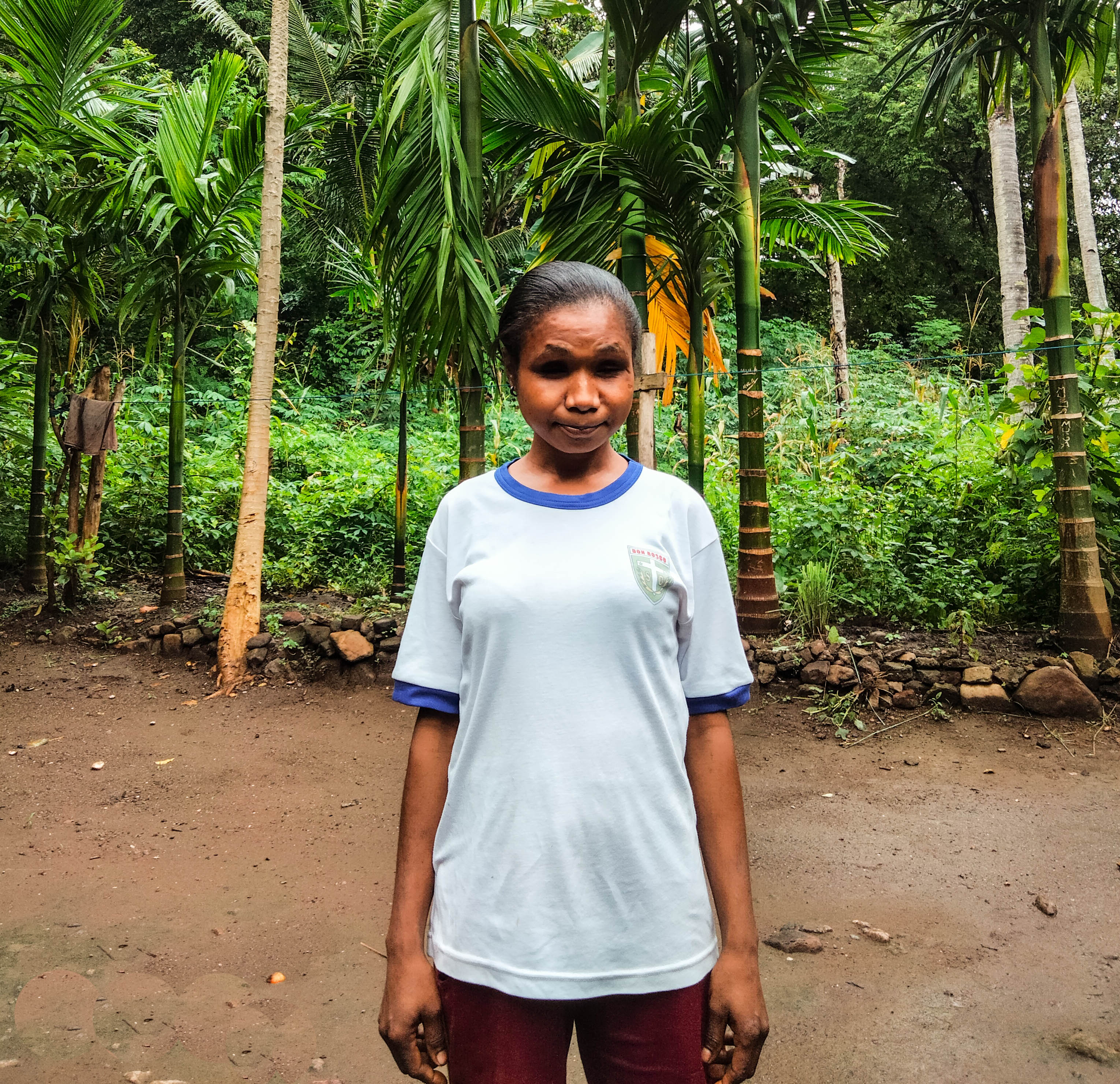
Katerina Letmau
Katerina admits that the price of walnuts, which had reached Rp 40,000/kg, was able to give her a profit and it would have been better if it had stayed at that price. Katerina has no problem accessing the market from her house. She can travel within 20 minutes by motorised vehicle. Her visual impairment can also be overcome because there are motorbike taxis that help her carry the walnuts to the market. She is also usually accompanied by her younger brother to keep her safe while walking to the market. However, the unstable price of walnuts has been a concern for Katerina until now.
Walnuts are an example of how local commodities that need to be preserved also need price control to attract the attention of the market, as well as to benefit the farmers. Currently, the INCLUSION project is still working on various approaches to connect the aspirations of walnut farmers with market demand. Hopefully, in the future, walnuts can be the key to a successful economic turnaround for farmers that impacts every family in Alor.
Writers:
Uri Petan Pering (Individual Service Provider INCLUSION Project area Kupang, East Nusa Tenggara)
Ferdinand Bano (Individual Service Provider of INCLUSION Project area Kupang, East Nusa Tenggara)
Matheos R. Dima (Individual Service Provider INCLUSION Project area Kupang, East Nusa Tenggara)
Nofrin Tobigo (Individual Service Provider INCLUSION Project area North Halmahera)
Eben Hezer Matana (Individual Service Provider of INCLUSION Project in Central Sulawesi area)
Editor:
Mariana Kurniawati (Communication Executive)

